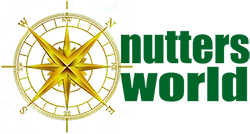Gibraltar's Secret Wars
Double Agents and Double Cross on Gibraltar during WWII
The Rock of Gibraltar was a stage on which one of World War II's most absorbing intelligence battle of wits was played out using agents, double agents, and triple agents.
By Nick Nutter on 2024-04-1 | Last Updated 2025-05-19 | Gibraltar's Secret Wars
This article has been visited 5,115 times

Spitfires at Gibraltar
The Spy Masters
Lieutenant Colonel John Alfred Codrington
Lt. Col. John Alfred Codrington was Assistant Chief of Staff, and Head of Station, Gibraltar in 1942 and1943. He was nominally responsible for all intelligence matters on Gibraltar, in other words MI9 and MI6.
He was constantly fighting his own battle to restrain his officers, prevent them working at cross purposes, allocating restricted resources, and defining their roles. Despite the in fighting between MI5 and MI6 and even between the miscellaneous departments within those organisations, Codrington's officers on the firing line as it were, by their very nature, independently minded, resourceful, not to mention heroic, had some astounding successes..
Colonel H.C. Medlam
Colonel H.C. Medlam was the top MI 5 man and the Defence Security Officer on the Rock. The DSO was affectionately known as 'Tito' Medlam.
In 1940 and 1941, Major H.C. 'Tito' Medlam, had been using a few double agents to curtail the German sabotage efforts, but several successful attacks had raised criticism of his work. He was able to defend his record to MI5, and they increased his staff to assist his efforts. This included an assistant DSO with extensive counter sabotage training and, in September 1942, the appointment of David J. Sherr as Head of the Security Intelligence Department.
Philip Kirby Green
In response to Medlam's plea for more men, Philip Kirby Green was appointed the Deputy Defence Security Officer in Gibraltar and he arrived prepared for his mission with extensive counter-sabotage training. Kirby Green arrived in Gibraltar during the summer of 1942. He was determined that the brightest officers should focus on counter sabotage operations. One of his brightest was David Scherr.
David Scherr
Company Sergeant Major David Scherr, who went on to receive an OBE for his work, was a young Spanish-speaking Field Security officer who had served in Gibraltar since 1940. In the summer of 1942, he accepted a commission in the Intelligence Corps. On the 1st of September 1942, Lieutenant David Scherr found himself the officer in charge (and sole member) of the Security Intelligence Department attached to the Defence Security Office.
Scheer was able to quickly recruit several new double agents to penetrate the German sabotage gang, having ten counter-sabotage double agents by May 1943, and a total of around two hundred double agents working on both counter espionage and counter sabotage operations during the war.
For the next two years, Scherr was to be at the centre of a web of espionage and sabotage worthy of a spy novel. The stakes were high. If Scherr and his staff failed, Gibraltar would be vulnerable to enemy sabotage and its vital contribution to Britain's war effort could be seriously reduced.
The history of the Defence Security Office (DSO) in Gibraltar, released by the Security Service and published by The National Archives in March 2005, was documented in fascinating detail in 1945 by David Scherr, the head of the DSO's Security Intelligence Department.
Desmond Bristow
Bristow had been sent to Gibraltar to open a MI6(V) station on 8 June 1942, accompanied by a former Irish priest, Captain Dom O'Shagar, as his secretary. His remit was to monitor enemy agent activity in the towns across the border in Spain. His work sometimes crossed path with David Sherr's.
Do you enjoy my articles? For your reading pleasure, this website does not carry third party ads. You could help me write more articles by buying me a cup of coffee.
The Secret Battle for Gibraltar


Infiltrating saboteurs over the frontier was an easy matter
The Spanish and German intelligence services often actively collaborated against Britain. Both had recruited local (mostly Spanish) agents, many of whom were fanatically anti-British. Both the German and the Spanish Intelligence Services regarded the Rock's military and naval facilities as an important strategic target against which to plan sabotage attacks.
One of the few factors in the DSO's favour was the support that it received from several anti-Franco Spaniards. They had opposed Franco's Nationalists during the Civil War of the 1930s, had survived the post-war purges, and were now fervently anti-Nazi. Many became allied agents.
For the Abwehr and their Spanish collaborators, infiltrating agents with their explosives over the frontier into Spain was a relatively easy task. They simply joined the eight thousand workers that trooped across the border each day. The chances of being recognised or stopped were slim.
After his capture, one saboteur, Luis Lopez Cordón-Cuenca, described how explosives could be brought into Gibraltar. When one agent suggested hiding them in lemons, oranges or cabbages, Cuenca answered: "No, it is easiest in bananas."
This of course was the challenge faced by SOE, they did not know who the potential saboteurs were, how or when the explosives would be smuggled into Gibraltar, nor where they intended to place their explosives. It was David Scherr's inspiration to infiltrate the sabotage gangs with double agents to such an extent that the DSO had warnings of every sabotage attempt. To maintain the fiction Scherr arranged fake sabotage explosions that would be spotted by the Abwehr watchers on 'Spy Row' (see Abwehr Operations - Gibraltar World War II).
An unintended consequence of this counter sabotage strategy was that one gang, the 'Crazy Gang,' became so infiltrated and, apparently, so successful, that they became the Abwehr preferred group for attacks against military installations on Gibraltar.
The Defence Security Office also had to contend with a second type of enemy agent, those whose task was to gather intelligence. Identifying and turning these agents was a much more difficult proposition for the counter intelligence team if only because the intelligence gathering agent tended to be more intelligent than his saboteur counterpart.
The Double Cross System
The Nazis and their Spanish allies initially seemed to have the advantage in the secret war for Gibraltar. However, the British became adept at using the "Double Cross" technique - that of identifying enemy agents and "turning" them into double agents for the British authorities - just as effectively in Gibraltar as they did in Britain.
DSO staff identified many hostile agents and either arrested them or turned them into double cross agents. No successful acts of sabotage occurred after July 1943, once the "screen" erected by the DSO's double agent network was in place. A total of forty-three sabotage attacks on the naval base were forestalled using double cross agents. Sea-borne attacks remained a problem; a number, including several conducted by Italian frogmen, were successful. (See Operation Ursa Major.)
The First Counter-Sabotage Double-Cross Cases
In the autumn of 1941, the DSO, 'Tito' Medlam was presented with a golden opportunity to penetrate the group of saboteurs set up by Emilio Plazas Tejera, the operations chief for the German financed, Spanish Falange led intelligence operation set up in the Campo de Gibraltar (see Abwehr Operations - Gibraltar World War II).
Double Agent Codename SUNDAE
Juan Jose Dominguez Munoz, a Spanish reserve army officer, was recruited by the Plazas group to sabotage military installations on Gibraltar. Munoz was issued with a bomb and sent across the frontier where he promptly turned himself over to the Security Police. Medlam was informed and recruited Munoz, who was given the codename SUNDAE, as the first counter-sabotage double-cross operation in Gibraltar.
SUNDAE returned to La Linea de la Concepcion. Over the following few months, he handed over two more bombs that were to have been exploded on Gibraltar and provided the DSO with valuable information about the Plazas group. Plazas arranged to have SUNDAE arrested by the Spanish police in April 1942 after he became suspicious that SUNDAE was a double agent since none of the three bombs issued to SUNDAE had been seen to explode.
No more was heard of SUNDAE until the 25th of July 1942 when a Juan Jose Dominguez Munoz took a prominent role in the attempted assassination of the then Spanish Minister for War, General Varela, an event known as the Begona Bombing. He was executed on the 1st of September 1942. On the eve of his execution, Hitler awarded him the Cross of the German Eagle, the highest Nazi medal for foreigners.
Double Agent Codename STUFF
In early 1942, after the bombing of HMT Erin, Medlam turned another saboteur to whom he gave the codename STUFF. All references to STUFF's identity have been redacted in official documents.
Like SUNDAE, STUFF had been given explosives by the Plazas group and had successfully smuggled them into Gibraltar where he gave himself up to the Security police. STUFF must have been highly regarded by Plazas. STUFF temporarily took charge when the gang's leader, Emilio Plazas Tejera, was summoned to Madrid for a meeting. At the meeting, Eleuterio Sánchez Rubio, a lieutenant colonel in the Spanish government's 'Straits of Gibraltar Information Service', a Falange member, and the coordinator of the Abwehr's intelligence operations in the Campo de Gibraltar, Plazas, and others discussed plans to sabotage British ships in Spanish ports.
Based on the information provided by STUFF, the DSO was able to take 'suitable countermeasures.' STUFF also passed on information relating to the identities of other members of the Plaza group.
Unfortunately, the pressures of his double life proved too much for STUFF, who, one day suffered a mental breakdown and was found wandering the streets of La Linea, babbling about his role as a double agent. Allied agents managed to bring him to Gibraltar where he was sent to England and institutionalised.
Double Agent Codename COCK
Many of the Spanish agents recruited by Plazas were in it just for the money and had few qualms about taking money from both sides. Some went one step further and manufactured information. One such agent was given the codename COCK after he gave information to the DSO (still under the auspices of Tito Medlam) that led to the discovery of a cache of explosives. In June 1942, COCK managed to extract more cash from the DSO for information that led to the discovery of a pile of containers that contained nothing more harmful than water.
Information from COCK was treated with some cynicism after that. (COCK may have been one of the HMT Erin bombers although all references to COCK's identity have been redacted in official documents).
'Tito' Medlam lacked the initiative and cunning to exploit or even protect his double agents and, as we have just seen with COCK, was too trusting of, by nature, deceitful double agents. Fortunately, Philip Kirby Green and David Scherr were quick to vitalise the Security Intelligence Department.
Double Agents Codenames FROG and BULL
COCK, elated by his financial success, approached a friend in La Linea and suggested that working for the Germans was a lucrative possibility (the Germans paid better than the Brits). The friend agreed in September 1942 and, when Cock went to Seville to report to the Germans, the new agent, known as FROG, immediately contacted the Gibraltar security authorities to tell them about his recruitment. Scherr met with the man and agreed to operate him and his brother, known as BULL, as double agents within the sabotage gang. Again, all references to FROG and BULL's identity have been redacted in official documents.
The Crazy Gang
FROG and BULL became founder members of what would come to be called the 'Crazy Gang'. In his account Scherr says this of the gang, 'the cloak-and-dagger tactics, the incompetence, bravado, stupidity, mutual suspicion and internecine rivalry displayed by many members of the gang make it easy to understand why an exasperated D.S.O., reading the writer's complicated counter- sabotage reports, could hardly have failed to choose that name for the group.'
By May 1943, the Crazy Gang contained nine double agents run by Scherr, none of whom could reveal themselves to other members because they were never sure who was or was not a double or even triple agent. The agents were known by their codenames, BRIE, COCK, GON, NAG, WIG, OGG, PAT, ENO, and JOE.
Double Agent Codename NAG
One case in Scherr's history illustrates the exceptional skills and bravery of the agents involved.
An agent known as NAG was, in Scherr's estimation, by far the most enterprising and courageous of all the Gibraltar double cross agents. NAG was a Basque called Angel Gauceda Sarasola. His identity was revealed in 2015 when a Gibraltarian historian, Ian Reyes, found his name unredacted in a paper from the National Archives.
Thirty-two years old at the time of his recruitment, Sarasola lived in the village of San Roque, a few kilometres from Gibraltar. He was employed as a lorry driver for the Naval Stores Office.
In early 1943, Sarasola was a police informant for Detective Inspector Harold Smith.
In early May 1943, he was approached by Paciano Gonzalez Perez and Carlos Calvo Chozas, a former provisional lieutenant and liaison between the Abwehr agents operating out of Algeciras and Sánchez-Rubio's group of agents, both double agents working for Scherr with the codenames BOZ and BRIE. The latter was a member of the 'Crazy Gang' whilst BOZ was a member of another group. BOZ and BRIE proposed that he assist a German organization in executing sabotage operations.
Sarasola reported the approach to his handler, Detective Smith, who realised that Sarasola would be of more use to the Defence Security Office than reporting minor thefts of dockyard equipment to himself.
According to Philip Kirby Green, the Deputy Defence Security Officer in Gibraltar, NAG was driven by a sense of admiration for the British and may not have been weighed down by a sense of national obligation. The total amount paid to NAG for his services over the first four-month period as a double agent was £11, intended to cover his expenses and resolve certain difficulties that arose before he agreed to cooperate. NAG had placed himself in a perilous situation, risking German reprisals and potential accusations of providing information to a foreign power about his own country's internal affairs.
David Sherr gave Sarasola the codename NAG.
NAG's first mission was to undertake a sabotage attack on a British minelayer, HMS Manxman, which had been used as a fast resupply vessel to carry supplies to the garrison on Malta. NAG's task was to place an explosive device on the ship, or if access to it proved impossible, to conceal it in the armaments store on shore or among the oil storage tanks nearby.
NAG promptly reported this encounter to the Security Intelligence Department and was run by Scherr as a double agent for the rest of the war.
The two 'friends' were apparently implicated in the sinking of the armed trawler, HMT Erin on January the 18th, 1942, and in the transfer of an explosive device, referred to as an "egg basket," in Algeciras on the 5th of April 1942. This device was intended to detonate on the tanker ship Blossom, moored in the port of Gibraltar.
Winning the King's Medal for Courage
Over the following year, NAG was repeatedly given sabotage materials, including high explosive bombs, to use against the British naval base. He either handed these over to Scherr or in some cases destroyed them himself. He also helped to frustrate sabotage attacks by other German agents, whose activities he uncovered through clever intelligence work.
Mainly because of NAG's efforts, all the Germans' subsequent attempts to set up sabotage networks failed. All of this was done without arousing German suspicions that he was collaborating with the British.
Furthermore, NAG provided a remarkably complete picture of German sabotage operations against Gibraltar. His reports enabled the British Government to make a detailed protest to the Spanish Government in late January 1944. As The Times reported (2 February 1944), "the evidence was produced in the clearest form and speedy remedies were requested."
By this time, Franco's attitude to Nazi Germany had begun to change as the tide of war turned decisively against Hitler. On 3 February 1944, the Spanish government issued a statement of "strict neutrality" in which it promised "the fulfilment of duties appertaining to such strict neutrality, both from Spanish nationals and from foreign subjects." Franco expelled the Abwehr from Spain, effectively shutting down German intelligence operations in southern Spain. NAG's successes were achieved at great personal risk while he and his family continued to live in Spain. In September 1945, he was awarded the King's Medal for Courage in the Cause of Freedom.
Tricking the Abwehr


Main Street Gibraltar c 1942
With his mounting successes at detecting and preventing sabotage attempts, Scherr had a problem, how to foil the German sabotage attempts whilst allowing them to think that some attempts at least had succeeded. In September 1942, things came to a head when FROG and BULL had handed over bombs meant for the Commercial Anchorage and for the dry docks but, upon turning them in, FROG told Scherr that COCK demanded a fake sabotage to keep up their appearances with the Germans.
Medlam was initially reluctant but eventually allowed David Scherr to stage a controlled explosion on a disused trawler moored at the Commercial Anchorage in January 1943. Intercepted Abwehr radio messages indicated the spoof explosion had fooled the watchers down 'Spy Row'.
Controlled explosions at key points around the Rock became standard practise after May 1943. Scherr's fake sabotages, which appeared to be real successes, ensured that his double agents became the stars of the enemy network.
As a result, the Crazy Gang were charged with even more missions and the explosives to be used were recovered by Sherr and his assistant, Lance Corporal Bush.
FROG turned over explosives meant for the dry docks in late 1942, while the agents NAG and OGG each handed in bombs meant for the minelayer HMS Manxman. NAG was especially prolific, handing over six bombs and dismantling others himself.
There were many other cases of such devices being turned over into British custody: between November 1942 and June 1943 Scherr received at least twenty separate devices, not including those disposed of by the agents themselves, and there was not a single successful German sabotage during that time.
Triple Cross Agents
As mentioned above, scooping up enemy intelligence agents, who were often double agents to begin with, was a whole different ball game to catching saboteurs. David Scherr had his first taste of recruiting triple agents, i.e. turning a double agent, when he was a Field Security Officer.
Triple Cross Agent Manoel Marques Pacheco
Manoel Marques Pacheco was a notorious Portuguese spy, well known to the Germans, Spanish and British, who sold his product to the highest bidders. For the Germans, Pacheco was controlled by Colonel Hans Joachim Rudolf who ran a string of agents through North Africa from his headquarters at Techuan. Supplied with ample funds by Rudolf, Pacheco turned up in La Linea where he started to share his wealth with anybody who even hinted they may be interested in working for the Germans. The offer of such easy money soon brought Jose Estelle Key to the table.
Jose Estelle Key was a thirty-two-year-old, unemployed Gibraltarian, when in 1940 he was informed that, as a 'useless mouth', he and his wife, Angeles Gomez de la Mata, would be evacuated from Gibraltar with the women and children. Jose's brother-in-law happened to be a secret police officer in Algeciras, working with the Abwehr, and he arranged a resident permit that allowed Jose to live in La Linea. It was there that he met Manoel Marques Pacheco and was soon persuaded that he should make himself friendly with the Spanish dockyard workers in Gibraltar and extract as much naval intelligence from them as he could.
Meanwhile, Manoel Marques Pacheco was offering his services to David Scherr. Scherr remarks in his diary that Pacheco was his 'first effort at the delicate art of treble-crossing a double-crosser'. Inevitably, Pacheco betrayed Jose Estelle Key.
Jose was lured across the frontier on the 5th of February 1942 and arrested in Irish Town. He had in his possession papers with information he was intending to pass to Pacheco and thus to the Germans. Jose was taken to England where he was tried, convicted, and executed.
Triple Cross Agent BRIE
The problem with triple agents, as Sherr was to discover when he encountered Carlos Calvo Chozas, is that it is not always obvious where the truth lies in such a web of deception.
For David Scherr, the ideal member of the Crazy Gang to have as a double agent, was the leader of the gang himself. The first time this happened was in the summer of 1942 when double agent STUFF temporarily took charge when the gang's leader, Emilio Plazas Tejera, was summoned to Madrid for a meeting.
In early 1943, Plazas was replaced by Carlos Calvo Chozas who almost immediately started to give David Scherr information about the gang's plans. Calvo was given the codename BRIE.
Unbeknownst to Scherr, BRIE was a triple agent, attempting to pass information about the allied counter espionage activities back to the Abwehr. BRIE was also unable to control the Crazy Gang and there was a real danger they would go off and do their own thing without consulting the leadership.
Scherr plotted with double agent GON by feeding the Crazy Gang with misinformation about BRIE. As a result, in the spring of 1943, the Crazy Gang accepted GON as their leader. For the next few months, Scherr effectively controlled the Crazy Gang.
The Queen of Hearts
Scherr also ran a couple of agents who were not part of the 'Crazy Gang' or affiliated to any intelligence gathering or sabotage group. The remarkable 'Queen of Hearts' chose her own codename.
In his account, David Scherr describes his first encounter with one of his independent Gibraltar agents at the Field Security Office in Gibraltar:
Using the cover name 'Captain Woodford', Scherr was interviewing Antonia Chozas Avila, an agent known as the 'WITCH'.
'Just as the interview I was having with another member of the public was drawing inconclusively to an end, I was called into the next room to cope with a most extraordinary visitor. This was a woman in her thirties whose dress, mannerisms, speech, and general appearance made her a rather seedy but not unattractive imitation of the seductive female spy of the thrillerette type.'
She sat down in front of the office desk, crossed her legs, adjusting the hem of her dress to reveal them to the best advantage, slowly lit a cigarette, inhaling and breathing out the smoke in the approved furtive, reticent fashion, looking down her long and aquiline nose at the same time, and then smiled across at her interrogator-to-be and said, in cosmopolitan English, "I am the Queen of Hearts. Who are you?"
David Scherr identified the 'Queen of Hearts' as Larissa Svirsky de Romero, the Ukrainian born wife of Manuel Romero Hume, a Spanish naval officer who was the harbour master at Puente Mayorga, one of the small ports of the Bay of Gibraltar, the Queen of Hearts was able to provide valuable information about a particularly clever and successful series of underwater attacks on Allied shipping off Gibraltar (see the Operation Ursa Major trilogy).
Larissa Swirski was born in Odessa in 1910 and died in Seville in 1977. This young aristocrat who was related to the Romanov family played a key part in the web of espionage that was woven in Gibraltar during the Second World War. Initially as a spy for the Nazis and later, as she became aware of the genocide taking place, as a counter intelligence agent for the Allies, this glamorous female, who spoke six languages, was the inspiration for Ian Fleming to create the first Bond-girl in the film Casino Royale.
Married to a naval officer who happened to be a friend of General Francisco Franco's younger brother, Larissa obtained a pass issued by Eleuterio Sánchez Rubio, to cross into Gibraltar (see Abwehr Operations - Gibraltar World War II).
On Gibraltar, she carried out numerous reconnaissance missions on behalf of the Germans, accompanied at times by her daughter Liana. Although a mother and her daughter tended not to raise suspicion, on more than one occasion, she was almost discovered.
After introducing herself to David Scherr she swopped sides and began reporting German and Italian activities on the Spanish side of the frontier.
The Agent That Never Was
Alfonso Olmo Rodriguez, a member of the Crazy Gang, was not one of Scherr's double agents. He was however avaricious whilst not wanting to take any unnecessary risks. Rodriguez 'invented' a character he called Ernesto Cozas. The Abwehr gave Rodriguez a bomb that was, according to Rodriguez, planted by Ernesto Cozas. Rodriguez had disposed of the bomb. Despite the lack of an explosion, the Abwehr paid Rodriguez.
The ploy came to light when one of the Crazy Gang, the double agent codenamed GON, demanded to meet Cozas. Rodriguez brought in a man who claimed to be Cozas. The fake Cozas was introduced to Scherr and became a genuine double agent within the Crazy Gang, possibly codenamed JOE.
Meanwhile, GON wrote to the Abwehr, exposing Rodriguez. Rodriguez was removed from the group and disappeared.
Cuenca and Munoz - Gibraltar Saboteurs
There were few successful attacks by land after Philip Kirby Green and David Scherr began infiltrating the sabotage networks. However, those that did occur had to be investigated and in at least one case, double agents provided invaluable assistance.
Jose Martin Munoz
Jose Martin Munoz was born to Spanish parents on the 18th of July 1924, in La Linea, Spain. After spending several years in Ceuta, he returned to his hometown at the beginning of 1943 and assumed the profession of street photographer. However, he had to leave that job after a couple of months.
On the 2nd of March 1943, Martin Munoz found employment in the Gibraltar shipyards. Shortly after, following a disagreement with his family, he left his house and moved into a hovel located on Calle Nueva with a friend, Andres Santos Fernandez. Once settled there, he met Paciano Gonzalez (double agent codename BOZ), who was acting under the orders of Carlos Calvo Chozas (triple agent codename BRIE).
They recruited Munoz with the task of planting a bomb in the shipyard.
Luis Lopez Cordon-Cuenca
Munoz enlisted the help of his friend, Cordon-Cuenca. Cordon-Cuenca was not the sharpest pencil in the box and his career as a saboteur soon came to an end.
Luis was arrested in June 1943 after attempting to smuggle a bomb into the Ragged Staff Magazine, a large ammunition depot in Gibraltar. Despite being detected by the border authorities while carrying the bomb, he managed to cross the border and concealed it in his workplace, a warehouse at the Empire Fruit Store, owned by his uncle, Augusto Cuenca Granada.
Luis was charged with "acting with intent to assist the enemy, and with having in his possession a bomb intended to cause an explosion in the dockyard." During his trial in August 1943, he claimed that he did not know that the package that he delivered to the warehouse in Gibraltar contained a German-made bomb. He also referred to threats allegedly made against his family.
The prosecutor described how Cuenca had dealings in La Linea, just across the border, with a Spanish man named Blas Castro who had spoken of blowing up an ammunition tunnel in the dockyard. According to a witness, Cuenca described how explosives could be brought into Gibraltar. "When the witness suggested hiding them in lemons, oranges or cabbages, Cuenca answered: "No, it is easiest in bananas."
Cordon Cuenca was sentenced to death on August 25, 1943. His appeal was rejected on December 13 of the same year by the Supreme Court of Gibraltar, which dismissed the argument that his case was outside the jurisdiction of the special court that had tried him.
Augusto Cuenca Granada
Luis's uncle, Augusto Cuenca Granada, the owner of the warehouse in which Luis hid his bomb, was an employee of the French Consulate in Gibraltar. The DSO classified Augusto Cuenca as a pro-fascist and an active enemy agent in Gibraltar and its surrounding areas between September 1939 and May 1945.
In August 1943, Cuenca Granada was detained in the San Roque prison for complicity in the planning of sabotage operations. However, he was transferred to the hospital in that town due to the efforts of the omnipresent Sánchez-Rubio. After leaving the hospital in November, Cuenca Granada was expelled from Gibraltar in January 1944 for engaging in "subversive activities." He relocated to the Campo de Gibraltar but was forced to depart due to Spanish authorities' suspicions of him being a German agent. Cuenca Granada's case was used by the DSO to try to establish a link between Fritz Blaum an Abwehr agent, second-in-command of the section liaising with Spanish Falangists, and the sabotage attempt carried out by Luis Lopez Cordon-Cuenca.
Sabotage on Coaling Island
Meanwhile, Munoz was having more luck.
On the 27th of June1943, Paciano Gonzalez and a man called Fermin Mateos gave Martin Munoz a so-called "puro" bomb and a "panel" type detonator, and briefly instructed him on how to handle them. The objective was for Martin Munoz to place the explosive device in one of the torpedoes of a destroyer to which he had access.
On June 28, Martin Munoz tried to access Coaling Island to plant the bomb, but when the Port Police prevented him from doing so, he hid the explosive device in the coal cellar of the Cafe Imperial, located at number 10 Main Street. Upon his return to La Linea, on the same afternoon, Paciano Gonzalez and Fermin Mateos provided Martin Munoz with a different type of bomb, known as a "galapagos." Martin Munoz had consented to act as a saboteur, a role he later admitted to the British authorities upon his arrest, motivated by a promise of 40,000 pesetas, although he only received 25,000 of this sum.
On the 29th of June, Martin Munoz concealed the "galapagos" bomb within his work attire and managed to cross the border, where he then hid the bomb beneath one of the Spitfire aircraft parked near the soccer field. The following day, the 30th of June, he retrieved the bomb and attached it to one of the fuel tanks on Coaling Island, igniting a fire that resulted in the loss of substantial quantities of fuel. This act significantly hindered the British war effort by disrupting the supply of high-octane fuel essential for the aircraft operating from the aircraft carriers based in the Mediterranean. A total of ten tanks, each with a 3,300-gallon capacity, were destroyed, and an additional tank holding 11,000 gallons also caught fire.
Following thorough investigations, the British authorities discovered that the command-and-control centre of the Coaling Island supply complex had sustained severe damage. Harold Smith, the chief inspector of the Gibraltar shipyards, estimated the fuel losses at approximately £7,000.
Investigating the Coaling Island Bombing
The Coaling Island bombing was the first serious attack since David Scherr had been put in charge of the Security Intelligence Department. It was also an embarrassment since Scherr had been warned of the attack by his agent NAG the previous day, he just did not expect it so soon.
NAG set off to find the perpetrators. He found the 'Crazy Gang' in their favourite Bar Tranio in Gib Street, talking about the bombing. He learnt that the agent planting the bomb had only been recently recruited by Carlos Calvo Chozas and Paciano Gonzalez Perez and that he was about twenty years old. He had apparently carried the bomb through the frontier under his crotch, held in place by a swimming costume and strapped to his thigh with a necktie.
On the 4th of July, NAG heard that the boy had a bad foot and was limping and that his foreman had told him he could be discharged if he so wished. This was enough information to identify Jose Martin Munoz. The job now was to find him.
On the night of the 7th of July, NAG arranged with Scherr to have a bogus bomb explode at the North Front airfield fuel dump. NAG needed a reason to meet his Abwehr contact, collect his fee and mingle with the 'Crazy Gang'. A spurt of flames shot into the air.
NAG collected his reward from his contact and then went out to celebrate with another of Sanchez Rubio's saboteurs called Juan Dodero Navarro. Navarro was soon drunk, and the pair went off to the hut on Calle Nueva where Munoz lived with his friend Fernandez. Unfortunately, both Munoz and Fernandez were out on the razzle, spending the twenty-five thousand pesetas reward Munoz had earned from the Germans. Munoz had already used some of the money to buy a small house and a fishing boat, not to mention a pair of identical suits for himself and Fernandez.
NAG did not catch up with Munoz until the evening of the 14th of July in Bar Tronio. Munoz was drunk and surrounded by two friends and some prostitutes, all of whom piled into two horse drawn gharries accompanied by guitarists and flamenco singers to head for another bar.
Two nights later, Munoz was back in Bar Tranio. NAG sent over a drink. Munoz was at first suspicious of this stranger providing refreshment but, as the evening wore on, they became best buddies, regaling each other with stories of their bravado. NAG still had some cash left over from his 'fire' on the 7th of July, so they partied together with some prostitutes and a flamenco cantaor called El Chato Mendez, repairing to the Lido Bar in the brothel district. Munoz related his tale of how he made three attempts to plant his bomb whilst NAG told him an exaggerated, and false, story of his airfield sabotage. According to Munoz, he had taken two bombs over the frontier on two separate occasions, one of which, a 'puro type' or cigar shaped explosive, was still hidden in a coal shed in the town.
On the following morning, the 17th of July, David Scherr opened the Defence Security Office to find a dead drunk NAG asleep on the floor. After copious coffee, NAG was able to give Sherr enough information to have Munoz apprehended the next time he came into Gibraltar.
Jose Martin Munoz - Apprehended
Jose Martin Munoz did not return to Gibraltar until he had spent all his reward money in the brothels and bars in La Linea.
On the 29th of July. Jose Martin Munoz was apprehended while attempting to re-enter Gibraltar to recover the bomb he had hidden in the coal shed and was taken to the DSO office. In his statement, he acknowledged his acquaintance with Paciano Gonzalez Perez and "Manuel" (possibly another agent called Manuel Tapia) and expressed his willingness to disclose the truth to save his life.
On the 31st of July, Martin Munoz confessed to having hidden the 'puro' bomb in the Cafe Imperial.
Munoz was accused of having caused the suspicious fire in the Gibraltar dockyard on 30 June 1943. Witnesses described how "sheets of flame shot into the air and a thick cloud of black smoke swirled back over the top of the Rock," in the words of The Times' report (1 July 1943).
He was also charged with having hidden a bomb in the coalhole of the Cafe Imperial.
At his trial in October 1943, he pleaded guilty to the first charge and the second charge was withdrawn. He was sentenced to death for having acted with "intent to assist the enemy by an act designed to impede naval operations or to endanger life."
On January 6, 1944, the Governor General of Gibraltar sent a note to the Foreign Office to report on the request for clemency made by Muguiro, the Consul General of Spain in Gibraltar. The Governor declined to comply with the request, stating that the Spanish authorities were conspiring against British interests. Muguiro responded that he was acting in an individual capacity and not on behalf of the Spanish Government.
Albert Pierrepoint, the executioner, and Harry Kirk, his assistant, travelled from England to enforce the sentence. Cordon Cuenca and Martin Munoz were hanged on January 11, 1944. The British authorities censored the press notes prepared to report on the executions, aiming to prevent any information from being published about the connections between the saboteurs and certain officers of the Spanish Army.
After 1943
The success of Operation Torch, the allied landings in North Africa, removed much of the pressure from Gibraltar although saboteurs and intelligence gathering enemy agents remained a threat until February 1944, when Franco banned any further Abwehr activity in Spain. Even after that date the DSO could not relax, there was still the danger to shipping from the Italian Decima Flottiglia MAS frogmen and the possibility of a rogue attack by a member of the disbanded 'Crazy Gang.'
David Scherr remained the head of the DSO's Security Intelligence Department on Gibraltar until the end of the war in Europe.
The Best Guide to Gibraltar
First published in 2016, The Rock from Bottom to Top was due for an overhaul. We are pleased to publish a second edition on the 320th anniversary of Britain's capture of Gibraltar in 1704.
Completely updated with new images, stories, and anecdotes, Exploring Gibraltar is like no other travelogue or guidebook.
Exploring Gibraltar: The Rock from Bottom to Top is for anybody interested in the history, attractions, and culture of Gibraltar.

FREE to read on Kindle Unlimited, available as an Ebook download and full colour paperback.
References
Andrew, Christopher. The Defence of the Realm: the Authorized History of MI5. Toronto: Viking, 2009.
Bennett, Ralph. Ultra and Mediterranean Strategy. New York: Morrow, 1989.
Bristow, Desmond with Bill Bristow. A Game of Moles: the Deceptions of an MI6 Officer. London: Little, Brown, 1993.
Burdick, Charles. Germany's Strategy and Spain in World War II. Syracuse, NY: Syracuse University Press, 1968.
Crowdy, Terry. Deceiving Hitler: Double Cross and Deception in World War II. New York: Osprey Publishing, 2008.
Harris, Tomas & Mark Seaman. GARBO: the Spy who Saved D-Day. Toronto: Dundurn Press, 2004.
Kahn, David. Hitler's Spies: German Military Intelligence in World War II. Reprint Edition. New York: Da Capo Press, 2000.
Lintott, Brett. (2018). The Mediterranean Double-Cross System, 1941-1945. 10.4324/9781315223285.
Macintyre, Ben. Double-Cross: the True Story of the D-Day Spies. New York: Crown, 2012.
Mackenzie, W.J.M. The Secret History of the SOE: the Special Operations Executive, 1940-1945. London: St. Ermin's Press, 2000.
O'Connor, Bernard. Blowing up the Rock: German, Italian and Spanish Sabotage attacks on Gibraltar during the Second World War. 2020
Rankin, Nicholas. Defending the Rock: how Gibraltar defeated Hitler. London: Faber and Faber, 2020.
Scherr, David. The Battle for Gibraltar, National Archives MI5: The history of the Defence Security Office (DSO) in Gibraltar. 2005
Trevor-Roper, Hugh, ed. Hitler's War Directives, 1939-1945. London: Sidgwick and Jackson,1964.
The Battle For Gibraltar | MI5 - The Security Service
Do you enjoy my articles? For your reading pleasure, this website does not carry third party ads. You could help me write more articles by buying me a cup of coffee.
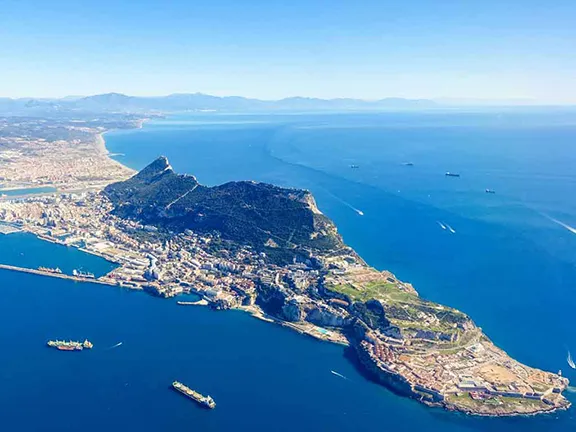 1: Defending Gibraltar in WWII
1: Defending Gibraltar in WWII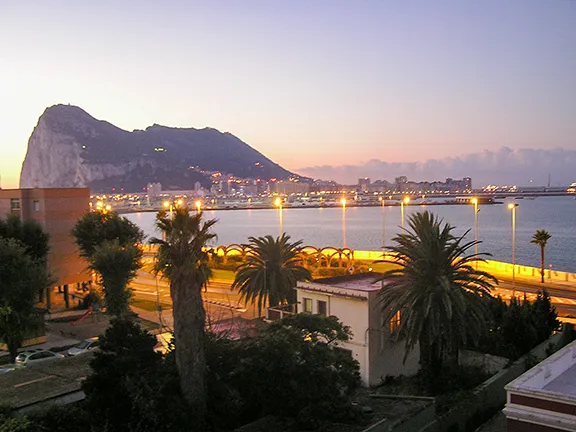 2: Operation Felix - Hitler's Plan to Capture Gibraltar
2: Operation Felix - Hitler's Plan to Capture Gibraltar 3: Operation Tracer - the Stay Behind Chamber
3: Operation Tracer - the Stay Behind Chamber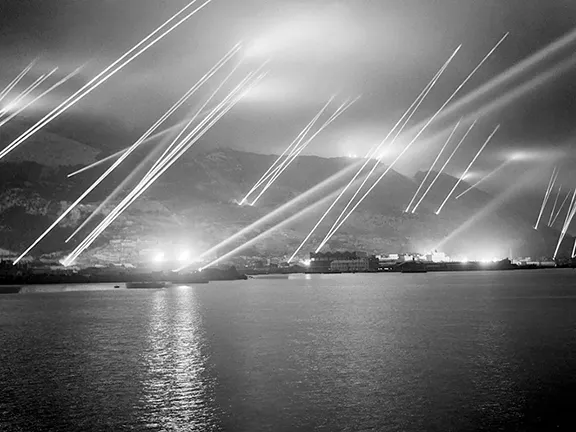 4: The WW II Evacuation of Gibraltar
4: The WW II Evacuation of Gibraltar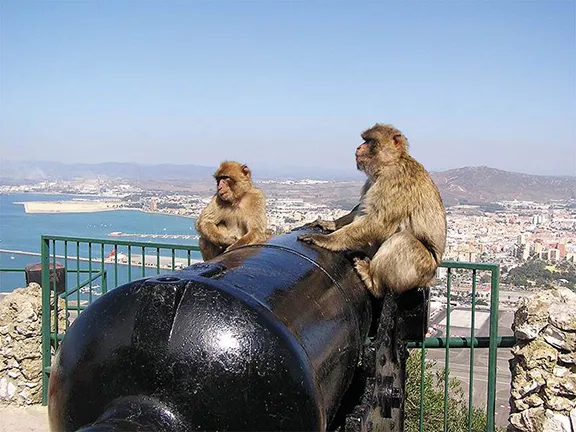 5: Gateway to Freedom for Escapers and Evaders
5: Gateway to Freedom for Escapers and Evaders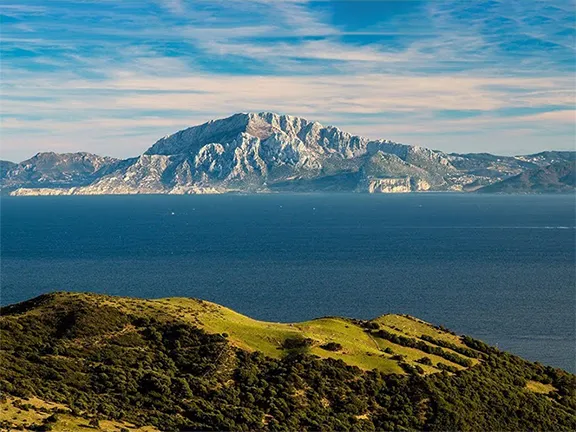 6: Gibraltar's Secret Flotilla during WW II
6: Gibraltar's Secret Flotilla during WW II 7: Covert Missions to France and North Africa
7: Covert Missions to France and North Africa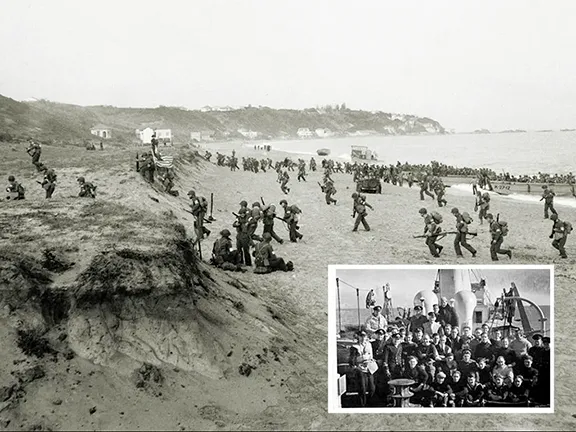 8: Letter from the Front - Personal Recollections
8: Letter from the Front - Personal Recollections 9: Operation Relator - SOE create mayhem in Gib
9: Operation Relator - SOE create mayhem in Gib 10: Operation Ursa Major - Prelude
10: Operation Ursa Major - Prelude 11: Operation Ursa Major - The Olterra
11: Operation Ursa Major - The Olterra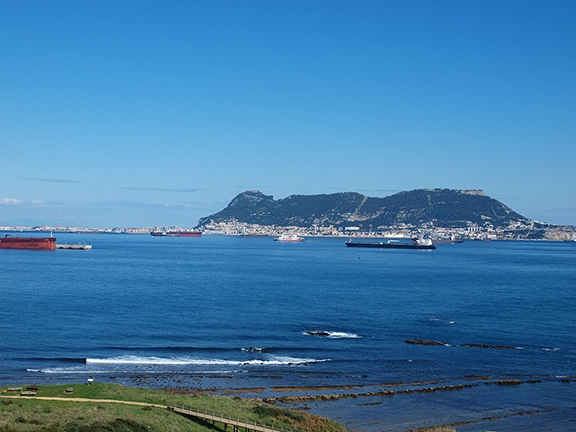 12: Operation Ursa Major - Execution
12: Operation Ursa Major - Execution 13: Operation Falaise - Zap a Nazi Spy Nest
13: Operation Falaise - Zap a Nazi Spy Nest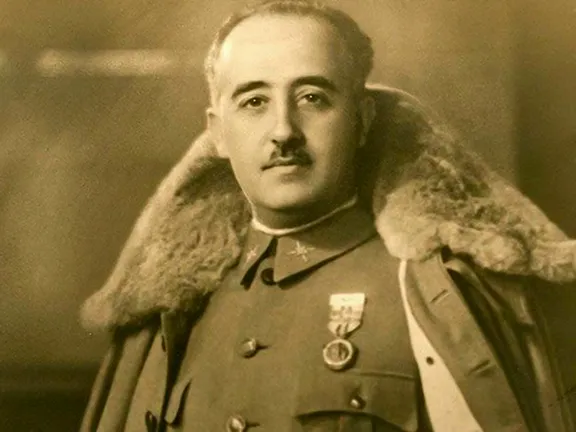 14: UK Policy towards Spain - Spanish Civil War
14: UK Policy towards Spain - Spanish Civil War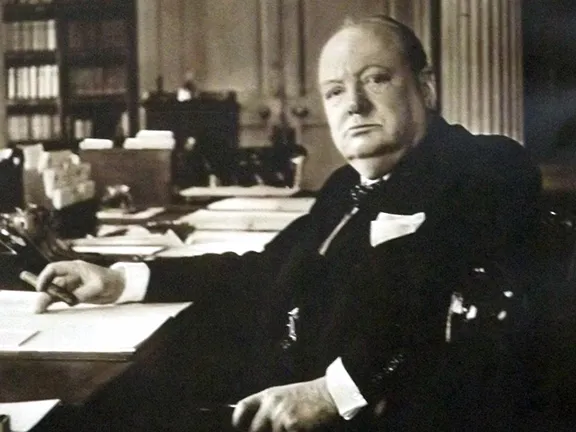 15: UK Policy towards Spain - 1940-1942
15: UK Policy towards Spain - 1940-1942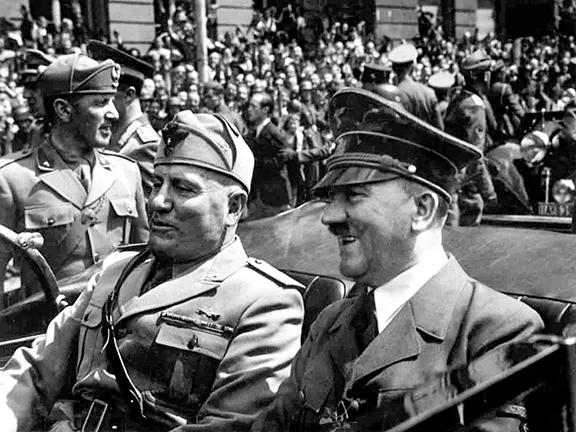 16: UK Policy towards Spain 1942 - 1945
16: UK Policy towards Spain 1942 - 1945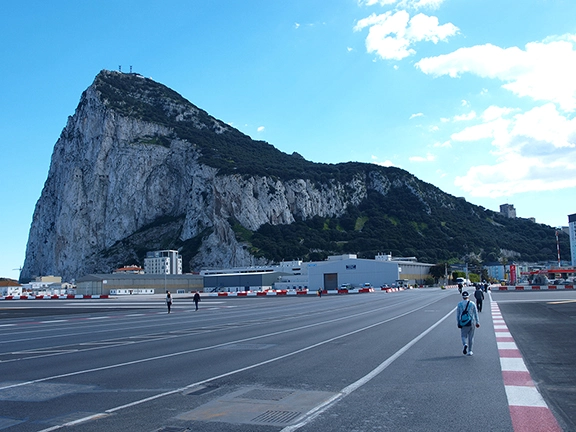 17: Abwehr Operations - Gibraltar WWII
17: Abwehr Operations - Gibraltar WWII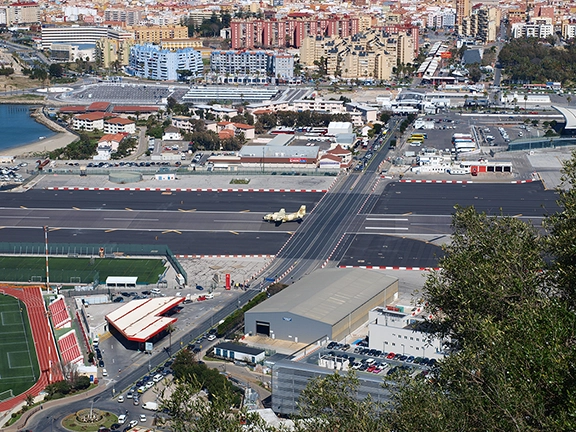 19: Operation Algeciras - 1982
19: Operation Algeciras - 1982